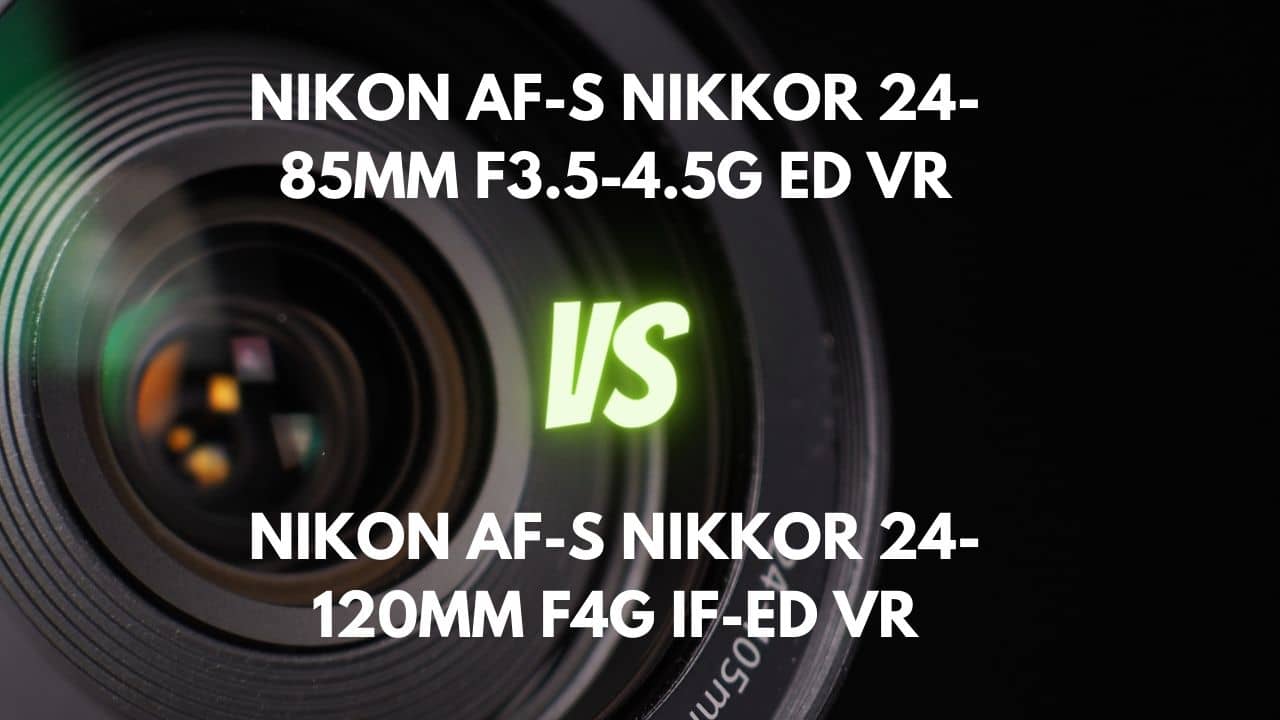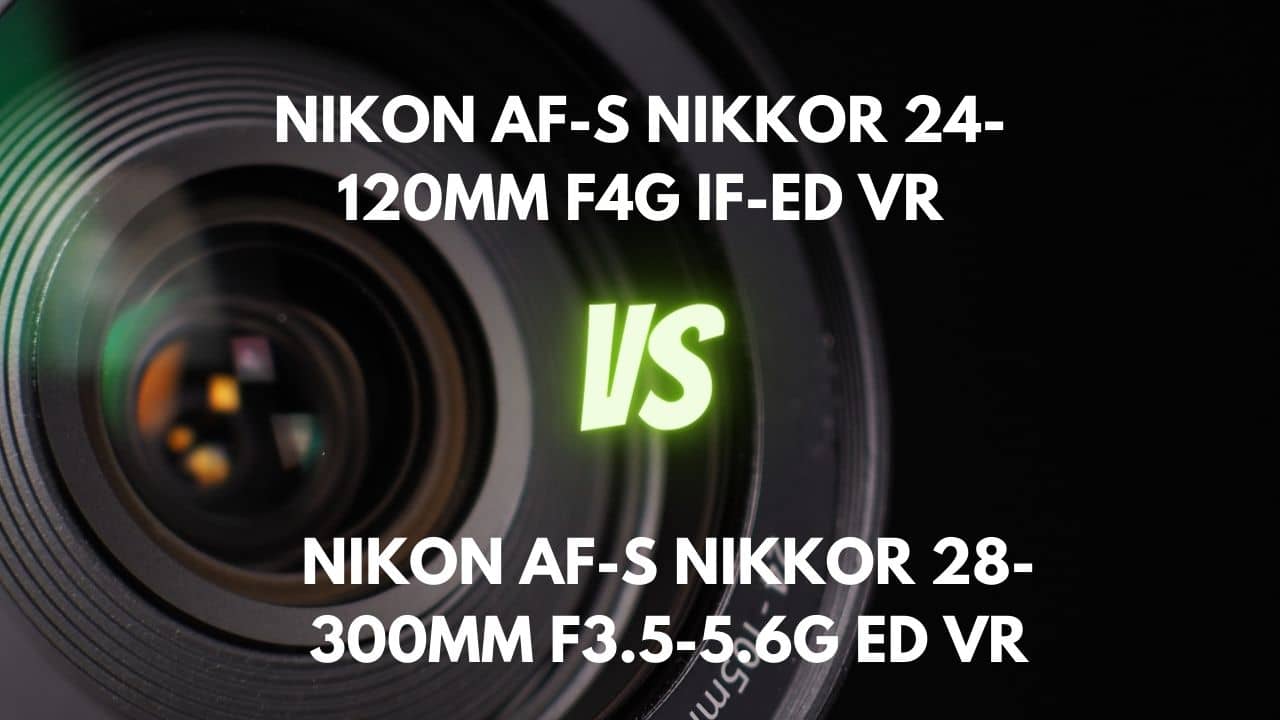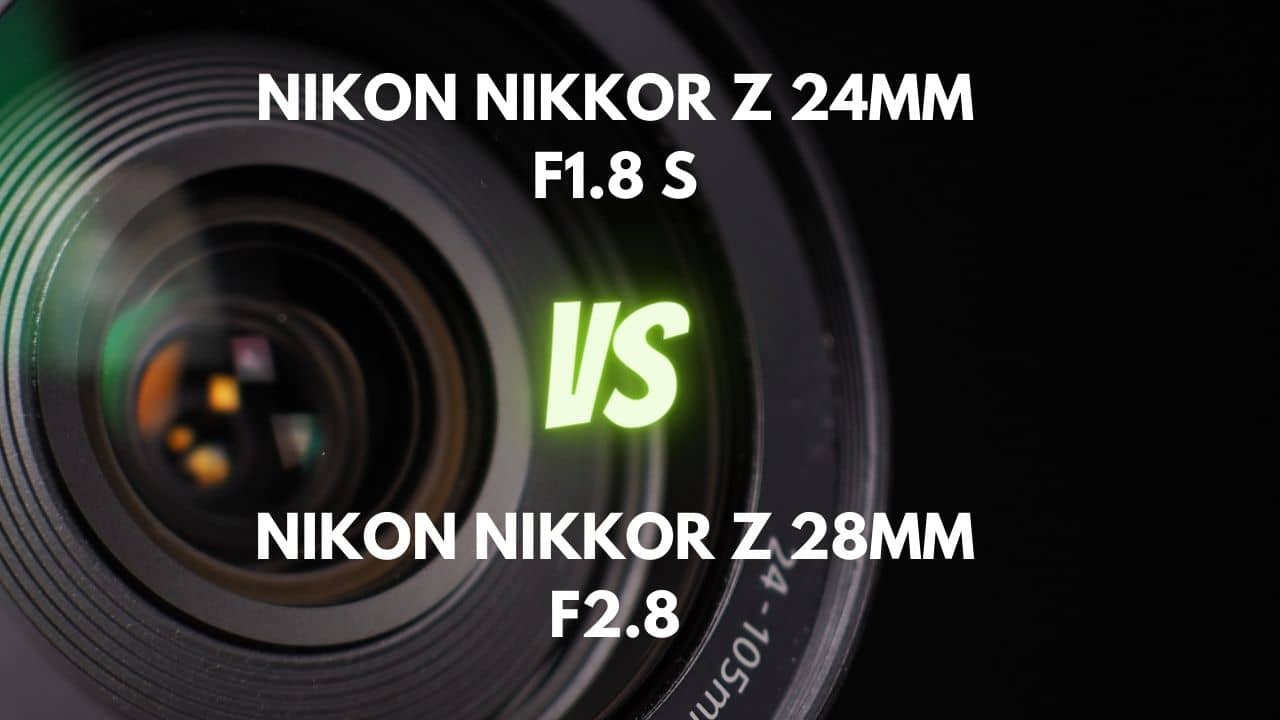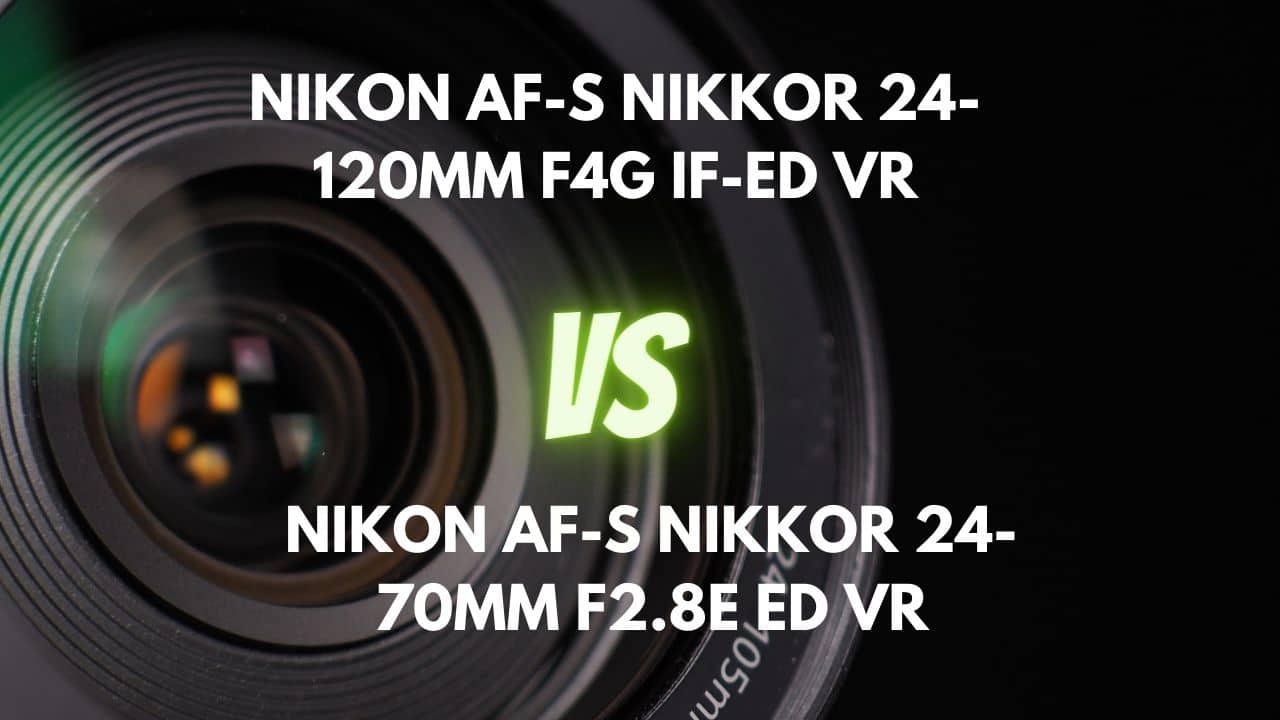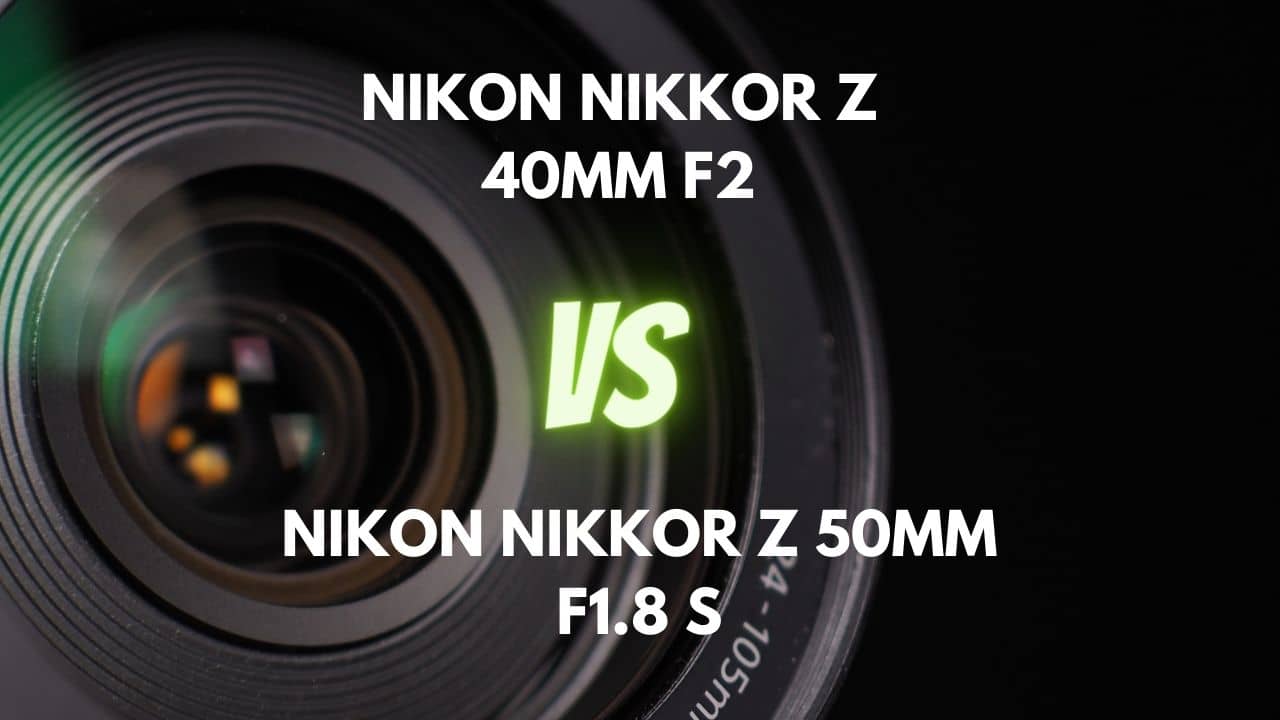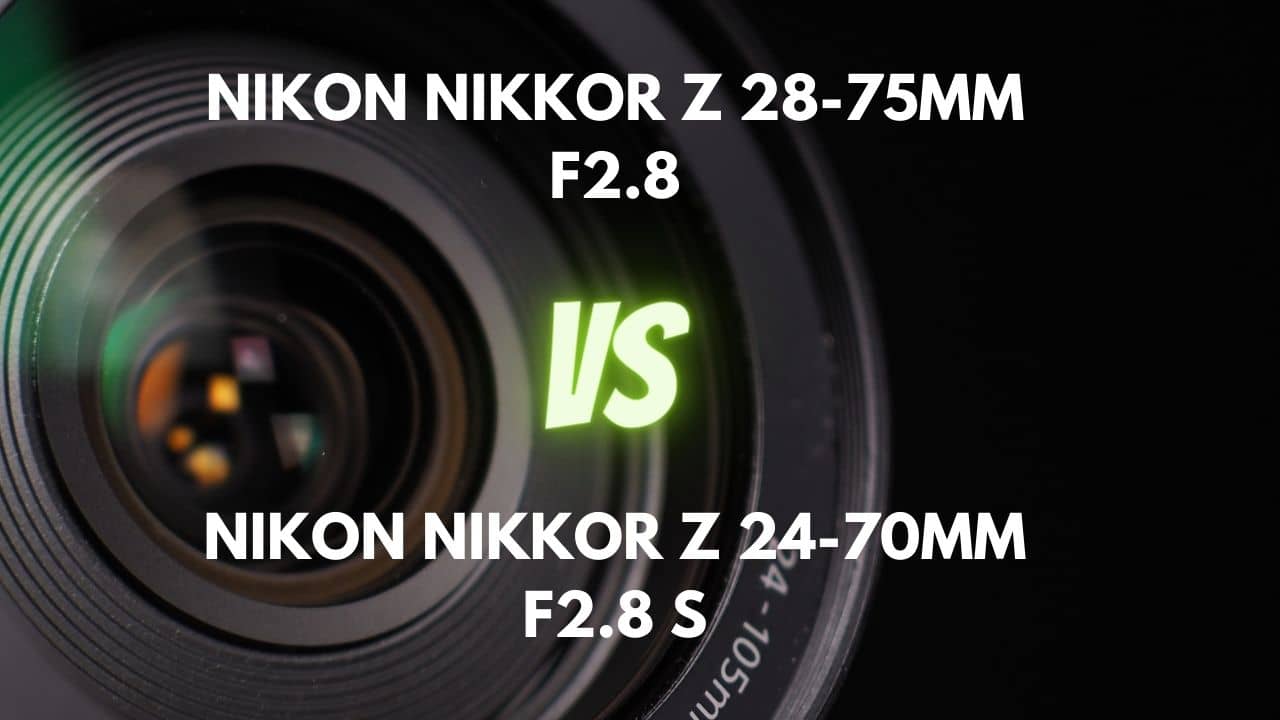Embarking on the journey of finding the perfect camera lens can feel like venturing into a vast, uncharted wilderness. With a myriad of choices at your fingertips, how do you zero in on the one that will magnify your photography skills?
Today, we’re setting our sights on two stellar contenders in the camera lens arena: the Nikon Z 24-120mm f/4 and the Nikon Z 24-200mm f/4-6.3. Whether you’re a landscape lover capturing the grandeur of nature, a street photographer immersed in the buzz of city life, a portrait enthusiast seeking to unveil the human soul, or a sports aficionado freezing time at the pinnacle of action, understanding the strengths and weaknesses of these lenses can catapult your photography to new heights.
This article aims to unravel the mysteries of these two lenses, shedding light on their performance across different scenarios and genres of photography. By diving into the intricacies of their specifications and functionalities, we hope to empower you with the knowledge to make an informed decision tailored to your unique photographic needs.
We believe that equipping yourself with the right lens can make the difference between capturing a moment and telling a story.
So, join us on this exploration and let’s unearth the magic that the perfect lens can bring to your photography!
Overview
| Nikon NIKKOR Z 24-120mm F4 S | Nikon NIKKOR Z 24-200mm F4-6.3 VR | |
|---|---|---|
| Max Aperture | F4 | F4-6.3 |
| Aperture Type | Fixed | Variable |
| Focal Range (mm) | 24-120 | 24-200 |
| Mount Type | Nikon Z | Nikon Z |
| Max Format | 35mm FF | 35mm FF |
| Zoom Ratio (X) | 5 | 8.3 |
The Nikon Z 24-120mm f/4 and the Nikon Z 24-200mm f/4-6.3 are both compatible with Nikon Z mount cameras and support a full-frame (35mm) format. Their commonality ends there, and each lens exhibits unique characteristics that cater to different photographic needs.
The 24-120mm lens has a fixed maximum aperture of f/4 across the entire focal length. This consistency means that the lens can let in the same amount of light regardless of the zoom level, which is beneficial for shooting in low light conditions. It can offer a relatively shallower depth of field at any focal length, useful for subject isolation, and potentially better image quality throughout the zoom range due to the inherent design benefits of fixed aperture lenses. However, the 24-120mm lens offers a shorter zoom range, which may limit its versatility for certain types of photography, such as wildlife or sports, where greater zoom capabilities might be desired.
On the other hand, the 24-200mm lens offers a significantly larger zoom range. This increased flexibility allows the lens to cover a broader spectrum of photographic scenarios, from wide-angle landscape shots to telephoto shots of distant subjects. However, it features a variable maximum aperture from f/4 to f/6.3, which means the lens will allow less light in at higher zoom levels, potentially impacting low light performance. The variable aperture might also affect the consistency of depth of field and overall image quality across the zoom range. However, the lens might be lighter and more affordable than its fixed-aperture counterpart, making it an attractive choice for those prioritizing portability and budget.
In conclusion, the 24-120mm lens, with its fixed aperture, can deliver more consistent performance across its zoom range, excelling in low-light conditions and offering potentially higher image quality. However, the 24-200mm lens, with its greater zoom range, provides more framing flexibility and could be a more budget-friendly and lightweight option, although it may face challenges in low light situations and offer varying performance across its zoom range.
Design and Ease of Use
| Nikon NIKKOR Z 24-120mm F4 S | Nikon NIKKOR Z 24-200mm F4-6.3 VR | |
|---|---|---|
| Diameter x Length (mm) | ⌀84×118mm | ⌀76.5×114mm |
| Weight (gr) | 630 | 570 |
| Filter Thread (mm) | 77 | 67 |
| Weather Sealing | Yes | Yes |
| Zoom Method | Rotary (extending) | Rotary (extending) |
| Distance Scale | No | No |
| DoF Scale | No | No |
| Hood Supplied | Yes | Yes |
| Hood Code | HB-102 | HB-93 |
The Nikon Z 24-120mm f/4 and the Nikon Z 24-200mm f/4-6.3 exhibit distinct differences in their physical characteristics, which can significantly impact their usability and performance.
The 24-120mm lens, with a diameter of 84mm and a length of 118mm, is slightly larger than the 24-200mm lens, which measures 76.5mm in diameter and 114mm in length. The larger size of the 24-120mm lens might give a more substantial and robust feel, potentially providing a more secure grip. However, this increased size might also make the lens less portable and more conspicuous in discreet shooting scenarios like street or wildlife photography.
In terms of weight, the 24-120mm lens is heavier, weighing in at 630 grams, compared to the 24-200mm lens, which weighs 570 grams. The additional weight of the 24-120mm lens could potentially result in more camera shake and discomfort during prolonged use, especially if you’re hand-holding the camera. It might also make the camera setup feel more front-heavy and unbalanced. On the other hand, the lighter 24-200mm lens is more portable and less likely to cause fatigue, making it more comfortable to use for extended periods. This lighter weight could also lead to easier lens swapping and better balance with the camera body, especially if you’re using a smaller or lighter camera.
In conclusion, if you value a larger, more substantial lens and don’t mind a bit of extra weight, the 24-120mm lens might be the superior choice. However, if portability, balance, and comfort are your primary concerns, the lighter and more compact 24-200mm lens could be the superior option.
Lens Mount and Barrel
The Nikon Z 24-120mm f/4 and Nikon Z 24-200mm f/4-6.3, while sharing some similarities, exhibit clear distinctions in their Lens mount and barrel design that could influence a photographer’s preference.
The 24-120mm lens features an aluminum lens mount, a metallic choice offering durability and a robust connection to the camera body. It’s supplemented with a rubber gasket for weather sealing, boosting protection against elements like dust and moisture.
The 24-200mm lens also utilizes an aluminum lens mount, which maintains a lightweight yet sturdy linkage to the camera, and incorporates a similar rubber gasket enhancing its weather resistance. In essence, both lenses prioritize both durability and protection from environmental conditions in their mount design.
As for the lens barrel, the 24-120mm lens employs a blend of materials including anodized aluminum and predominantly plastic components. This hybrid design aims for a balance between durability (from the aluminum) and portability (from the plastic). The textured finish, with rubber-clad sections, ensures a secure grip. However, as the lens extends significantly during zooming via a dual telescoping barrel, it might be more susceptible to damage over time than lenses with simpler extending mechanisms or internal zoom designs.
On the other hand, the 24-200mm lens opts for a largely plastic lens barrel, which while less robust than metal, grants the lens a lighter, more manageable form. This lens also features a dual extending barrel design which, although compact at 24mm, nearly doubles its length when zoomed out to 200mm. This design facilitates a wide zoom range, but it may increase the lens’ vulnerability to potential damage and wear over time.
In conclusion, both lenses display a thoughtful balance of durability, weight, and cost considerations in their design. If you’re a photographer who values a more substantial feel and a blend of materials in the lens barrel, the 24-120mm lens may appeal to you more. However, if you prioritize a lighter construction and are comfortable with a primarily plastic barrel, the 24-200mm lens might be the superior choice for you. Always bear in mind that the longevity of a lens also heavily depends on careful handling and maintenance, regardless of its construction materials.
Weather Sealing
The 24-120mm and 24-200mm camera lenses both exhibit impressive weather-sealing features.
Delving into the 24-120mm lens first, it comes with a rubber gasket at the lens mount and internal seals at the rings, switches, and the front of the barrel. This arrangement provides substantial protection against dust and moisture. A standout feature is the fluorine coating on the front element, which effectively combats dirt and smudges. While it may not be entirely impervious to dust and moisture under all conditions, it has proven its mettle in rough weather, including rainstorms. However, in extreme conditions, it’s advisable to clean the telescoping barrel before retracting it to 24mm to ensure its longevity.
On the other hand, the 24-200mm lens boasts a robust degree of weather sealing. Similar to its counterpart, it features a gasket at the lens mount and internal seals at the rings and switches. The fluorine-coated front element is a shared feature, repelling dust, water, and grease effectively. This coating also ensures water droplets roll off with ease, a significant advantage in wet environments. Despite its impressive weather sealing, it’s recommended to use a lens hood and routinely dry the lens front when operating in damp conditions to maintain its performance.
Fully weather-sealed lenses, like the 24-120mm and 24-200mm, offer superior protection, durability, and performance, particularly in adverse conditions. They are preferred by photographers frequently operating in harsh environments. Despite being potentially more expensive due to the required engineering and materials, their longevity and performance justify the cost.
In conclusion, while both lenses exhibit commendable weather sealing features, the 24-200mm lens
has a slight edge due to its superior resistance to harsh conditions and the recommendation of lens hood usage for additional protection. This lens would be a valuable asset to any photographer venturing into challenging weather scenarios.
Rings
The design and functionality of the rings on the Nikon Z 24-120mm f/4 and Nikon Z 24-200mm f/4-6.3 differ significantly, influencing their user experience and performance.
The 24-120mm lens features three rings: focus, zoom, and control. The manual focus control is conveniently positioned towards the front of the outer barrel, and the zoom ring, although somewhat stiff, has well-spaced focal length markings. The control ring, which can be customized for various settings such as aperture or ISO sensitivity, is knurled for better grip.
The rings offer a tactile experience with their ridged design, adding to the lens’s overall high-quality feel. The weight distribution is balanced, contributing to comfortable handling. Although the lens lacks a windowed distance scale and depth-of-field indicator, and there’s no dedicated aperture ring, the control ring can be assigned to perform this function. Overall, the design of the rings is thoughtfully executed, providing an array of customizable options despite a few minor limitations.
On the other hand, the 24-200mm lens incorporates two rings: a zoom ring and a control ring. The zoom ring, positioned at the front of the barrel, is large and features rubbery grooves, making it comfortable to use for smooth and precise zooming. The control ring, situated just behind the zoom ring, can be used for manual focus or to control other settings.
It is narrower than the zoom ring and has a raised ridge pattern, providing a tactile experience, even for photographers wearing gloves. An extension lock switch on the zoom ring prevents accidental extension while carrying the lens. However, this lens doesn’t feature a windowed distance scale or a depth-of-field indicator, and switching to manual focus requires accessing the camera’s quick menu, which may be inconvenient for some users.
In terms of user experience, the 24-120mm lens provides more versatility with its three-ring design, offering greater control and customization, making it a potentially better choice for photographers requiring more adaptability. However, the 24-200mm lens, with its ergonomic design, larger zoom ring, and extension lock switch, could be preferred by photographers prioritizing comfort, simplicity, and precision in zooming. Therefore, the superiority of one lens over the other largely depends on the specific needs and preferences of the individual photographer.
Switches/Buttons
The Nikon Z 24-120mm f/4 and Nikon Z 24-200mm f/4-6.3 each have a unique set of switches and buttons, which provide varying levels of control and convenience.
The 24-120mm lens comes equipped with an AF/MF switch, allowing users to conveniently alternate between autofocus and manual focus. Positioned towards the rear of the lens, this switch is easily accessible and enhances user experience by offering quick changes in focusing modes.
Additionally, this lens features a customizable L-Fn (Lens-Function) button, which is a multifunction tool capable of performing an array of tasks such as AF-ON, metering settings, and subject tracking. This button is rubberized, which makes it tactile and easy to operate, further contributing to the lens’s user-friendly design.
On the other hand, the 24-200mm lens adopts a more minimalist approach. It has a lock switch nestled between the control and zoom rings, which prevents the lens from unintentionally extending when not in use. This feature is particularly useful in maintaining the lens’s compactness during transportation.
However, the lens falls short in providing direct control over the focusing mode and vibration reduction, as it lacks an AF/MF switch and a VR switch. Instead, these functionalities must be accessed through the camera’s menu system, which might be less convenient for some users.
In summary, while the 24-120mm lens offers direct control and customization with its AF/MF switch and the L-Fn button, the 24-200mm lens aims for simplicity and compactness with a lock switch and fewer direct control options. For those who value direct control and the ability to quickly adjust settings on the lens itself, the 24-120mm lens would be the more appealing option. Conversely, those who appreciate a minimalist design and are comfortable controlling settings via the camera’s menu might prefer the 24-200mm lens.
Filter Thread
Beginning with the Nikon Z 24-120mm f/4, it is equipped with a 77mm filter thread made of plastic. This size is quite standard in the photography world, enabling it to work smoothly with commonly used filters, including rotating polarizers or grad filters, without causing vignetting on a full-frame at 24mm. However, caution should be exercised when mounting screw-on filters, as the plastic filter ring may be less durable than metal counterparts.
In contrast, the Nikon Z 24-200mm f/4-6.3 boasts a 67mm filter thread, also crafted from plastic. The smaller filter size offers certain advantages. Firstly, the front element and filter thread do not rotate during focusing, which is a boon when using polarizers or graduated neutral density filters. Secondly, 67mm filters are generally more affordable than larger ones, such as the 82mm, making this lens a more cost-effective option for those frequently using filters.
The key distinction between the two lenses lies in the filter thread size and its implications. While the 24-120mm lens provides greater compatibility with standard filters, its larger size could lead to costlier filter investments. On the other hand, the 24-200mm lens, with its smaller filter size, may be more budget-friendly in terms of filter purchases, yet it may limit the variety of filters that can be used without step-up rings.
Lens Hood
The Nikon Z 24-120mm f/4 and 24-200mm lenses present notable differences in their lens hoods, which serve to reduce lens flare and protect the lens from potential damage.
The 24-120mm lens comes with a petal-shaped lens hood included in the package. Made of plastic, it can be conveniently reversed for storage, making it compact and travel-friendly. However, it is described as having a somewhat flimsy finish, which may raise concerns over its durability and long-term effectiveness in lens protection. Nonetheless, it can be screwed onto the lens smoothly, suggesting a user-friendly design.
On the other hand, the Nikon Z 24-200mm f/4-6.3 is accompanied by the HB-93 lens hood. This hood is engineered to be durable and effective in minimizing lens flare and ghosting, thereby enhancing image quality. It sports an ergonomic bevel for comfortable handling and can be smoothly rotated and attached to the lens, indicating an intuitive design. Similar to its counterpart, this lens hood is also reversible, simplifying storage and transportation.
While both lens hoods are designed to serve the same primary functions, they exhibit differences in their construction and user experience. The 24-120mm lens hood, though straightforward to attach, might not provide the same level of durability and effective flare reduction as the 24-200mm lens hood. The latter’s emphasis on durability and its specially designed ergonomic bevel, which enhances user comfort, make it stand out.
In conclusion, while the lens hood of the 24-120mm lens is undoubtedly functional and easy to use, the 24-200mm lens’s hood, with its durable construction, ergonomic design, and superior flare reduction capabilities, seems to offer a more premium user experience. Therefore, in terms of lens hood superiority, the 24-200mm lens appears to take the lead.
Focusing and Optical Stabilization
| Nikon NIKKOR Z 24-120mm F4 S | Nikon NIKKOR Z 24-200mm F4-6.3 VR | |
|---|---|---|
| Autofocus | Yes | Yes |
| AF Motor | Stepper motor | Stepper motor |
| Rotating Front Element | Does not rotate on focusing | <Unknown> |
| Min Focus Distance | 0.35m | 0.5m(24mm);0.7m(200mm) |
| Max Magnification (X) | 0.39 | 0.28 |
| Full-Time Manual Focus | Yes | Yes |
| Focus Method | Internal | Internal |
Focusing Performance
The Nikon Z 24-120mm f/4 boasts a fast and accurate autofocus performance, clocking approximately 0.35 seconds to focus from infinity to 1.28m at 120mm focal length, a rapid pace that outstrips many competitors. Its silent operation makes it an excellent choice for both still photography and video recording. Remarkably, it continues to maintain its speed and accuracy even in low-light conditions, with the eye-tracking feature performing admirably under challenging lighting scenarios. An additional perk is the manual focus override, which enables users to fine-tune the focus as they see fit.
he manual focus action is smooth, facilitated by a rubberized focus ring that allows easy, delicate adjustments. With an internally focusing design, the lens maintains a constant length, and the front element stays stationary during focusing. Minimal focus breathing further enhances its suitability for videography, providing a consistent field of view during focus adjustments.
Contrastingly, the Nikon Z 24-200mm f/4-6.3 offers a relatively slower autofocus speed, taking around 0.5 seconds to focus from infinity to 2.04m at 200mm focal length. Although this might not be as quick as certain professional zoom lenses, it remains silent and largely accurate in its operation. Its performance in low-light scenarios might not match the speed of well-lit conditions, but it still remains reliable.
The manual focus override is present in this lens as well, allowing users to gain control when desired. Like the 24-120mm lens, it also possesses an internally focusing design and exhibits minimal focus breathing, making it a suitable candidate for video shooting.
While both lenses hold their ground in terms of focusing performance, the 24-120mm lens is the clear front-runner with its superior autofocus speed and low-light performance. The ability to swiftly and accurately focus in various lighting conditions gives it a notable edge. Despite the commendable performance of the 24-200mm lens, it falls short in comparison with its slightly slower speed. Therefore, if focusing performance is a priority, the 24-120mm lens emerges as the superior option.
Optical Stabilization
The Nikon Z 24-120mm f/4 lacks a built-in optical image stabilization system. However, it can effectively pair with the in-camera stabilization feature of Nikon Z full-frame cameras. This combination offers a commendable stabilization performance, capable of delivering up to 4 stops of compensation. This feature is beneficial for handheld shooting and for situations involving slower shutter speeds, such as low-light photography.
On the other hand, the Nikon Z 24-200mm f/4-6.3 boasts a built-in optical stabilization system, known as Vibration Reduction (VR). When used in conjunction with the Nikon Z7 camera’s in-body image stabilization (IBIS), the lens can provide an impressive 4.5 to 5 stops of stabilization, contingent on the focal length and shooting conditions. This means that even at a slow shutter speed of 1/6 sec (5 stops) at 200mm, the majority of images retain sharpness, a testament to its effective stabilization performance. This lens’s stabilization feature performs exceptionally well, particularly when shooting handheld at the telephoto end or in low-light conditions.
While both lenses effectively utilize available stabilization systems, the 24-200mm lens, with its built-in optical stabilization system, provides a slightly superior performance. The extra 0.5 to 1 stop of stabilization can make a significant difference, especially when shooting at slower shutter speeds or longer focal lengths. Hence, if optical stabilization is a priority, the 24-200mm lens emerges as the superior choice.
Image Quality
| Nikon NIKKOR Z 24-120mm F4 S | Nikon NIKKOR Z 24-200mm F4-6.3 VR | |
|---|---|---|
| Special Elements | 3 ED elements, 3 aspherical elements, 1 aspherical extra-low dispersion | ED and aspherical elements + ARNEO and Super Integrated coatings |
| Diaphragm Blades | 9 | 7 |
Aberration
The Nikon Z 24-120mm f/4 and the 24-200mm lenses both offer commendable control over various types of aberrations.
The 24-120mm lens demonstrates significant proficiency in mitigating chromatic aberration. Chromatic aberration, a phenomenon where different colors of light don’t converge at the same point, leading to color fringes along high-contrast edges, is only mildly visible in specific conditions. Notably, the lens does not exhibit significant spherochromatism or axial color, both advanced forms of chromatic aberration. In other words, it effectively suppresses false color, contributing to the overall image quality.
In contrast, the Nikon Z 24-200mm f/4-6.3 presents low to moderate chromatic aberration, with the most noticeable instances occurring at the extreme ends of its focal length range, 24mm and 200mm. However, this lens’s aberrations can be easily rectified in post-processing without leaving any conspicuous artifacts. The lens shows strong performance in terms of coma aberration, an optical error that can cause point light sources to appear distorted, particularly in night shots with high contrast. It also maintains minimal spherical aberration, which can cause a soft, halo-like glow around bright points of light, with no noticeable spherochromatism.
In conclusion, both lenses control aberrations to a great extent, contributing to the quality of the images they produce. However, the 24-120mm lens performs slightly better in controlling chromatic aberration, making it the superior choice in this regard. If you frequently shoot in conditions that are prone to inducing chromatic aberrations, such as backlit scenes or high-contrast environments, the 24-120mm lens might serve you better.
Sharpness
The Nikon Z 24-120mm f/4 and 24-200mm lenses both offer commendable levels of sharpness, though there are some differences in how this sharpness is distributed across their focal length ranges and apertures.
The 24-120mm lens stands out for its exceptional sharpness throughout its focal length range, showcasing remarkable center sharpness. Although the corner sharpness isn’t as strong as the center, it still impresses, particularly from f/5.6 to f/16. The lens performs well even when shot wide open at f/4, displaying impressive corner-to-corner sharpness that improves further when stopped down. The sweet spot for maximum sharpness generally falls between f/4 and f/8, with diffraction beginning to impact sharpness at smaller apertures like f/16 and f/22. This makes it a versatile choice for a variety of shooting scenarios, from landscapes to portraits.
On the other hand, the Nikon Z 24-200mm f/4-6.3, a superzoom, offers notable sharpness, especially in the 35mm to 70mm range, where center sharpness excels. The corners, however, may exhibit some softness, particularly at 24mm, 105mm, and between 135mm and 200mm. At wide open apertures, the center maintains good sharpness at both extremes of the focal length, but the corners tend to be a bit softer. Stopping down improves corner sharpness, with the best results around f/5.6 at the wide end and f/8 at the telephoto end. The optimal aperture for maximum sharpness tends to fall between f/5.6 and f/8, making this lens a good choice for scenarios that require a broad focal length range.
In conclusion, both lenses provide good sharpness, but their performance varies at different focal lengths and apertures. If edge-to-edge sharpness throughout the focal length range is a priority, the 24-120mm lens proves to be the superior choice. However, if you need a versatile superzoom lens and are willing to post-process or compromise slightly on corner sharpness, the 24-200mm lens is a solid option.
Bokeh Quality
The Nikon Z 24-120mm f/4 and 24-200mm lenses differ in the quality of their bokeh, depending on factors such as focal length, aperture settings, and the distance to the subject.
The 24-120mm lens produces a bokeh that fluctuates in quality based on the focal length and aperture. When utilized at wider apertures and longer focal lengths, it delivers a pleasing, smooth bokeh with effective subject separation. On the downside, it can display an “onion skin” effect in certain specular highlights and a “soap bubble” bokeh under specific conditions. Also, when you’re shooting at shorter focal lengths or smaller apertures, the bokeh might appear less smooth or creamy, which can affect the overall aesthetic appeal of your photos.
On the flip side, the Nikon Z 24-200mm f/4-6.3 generally produces a smooth, pleasing bokeh, especially at the telephoto end or when getting close to the subject. Its bokeh balls are soft, mostly free from “onion ring” artifacts, and exhibit mainly circular shapes, with the occasional slight octagon. The out-of-focus regions have a neutral feel with blur circles maintaining their circular shape throughout. The transition from in-focus to out-of-focus areas is quite natural, aiding in subject separation and background blur at 200mm. However, there are some potential issues, such as bright edges on highlights, slight distortion of blur circles, and “cat-eye” clipping towards the corners. Despite these, the bokeh quality is generally satisfactory, particularly considering it’s a superzoom lens.
In conclusion, both lenses offer decent bokeh quality with their own strengths and weaknesses. If you’re seeking a lens that provides a more consistently smooth bokeh across different settings, the 24-200mm lens might be the superior choice despite its minor imperfections. However, if you’re more comfortable with a lens that offers good subject separation and don’t mind the occasional “onion skin” or “soap bubble” effects, the 24-120mm lens is a solid option.
Flare/Ghosting
Both the Nikon Z 24-120mm f/4 and 24-200mm lenses are equipped to handle flare and ghosting, which are optical phenomena that can sometimes detract from image quality. However, their performance varies depending on certain conditions.
When it comes to the 24-120mm lens, it demonstrates strong resistance to flare and ghosting, especially at shorter focal lengths. This commendable performance is in part due to the application of special coatings on the front glass of the lens. These coatings enhance its resistance to these unwanted artifacts, making it an excellent choice for high dynamic range scenes or when shooting in the direction of bright light sources.
On the other hand, the Nikon Z 24-200mm f/4-6.3 also showcases good resistance to flare and ghosting, more noticeably at shorter focal lengths. The ARNEO coating applied to this lens aids in suppressing these artifacts, thereby upholding contrast and overall image quality. However, as you zoom beyond 24mm, the lens hood’s protective role diminishes, leading to a higher likelihood of experiencing flare or ghosting, particularly when the sun or other bright light sources are close to the frame.
Moreover, the flare performance of this lens does not quite reach the level of certain other Nikon lenses, such as the Z 24-70mm f/4 or Z prime lenses. Therefore, it’s advisable to be vigilant of light sources when shooting at longer focal lengths to avoid undesirable flare or ghosting in your images.
In conclusion, both lenses perform admirably in managing flare and ghosting, particularly at shorter focal lengths. The 24-120mm lens offers a more consistent performance across its focal length range. Therefore, if flare and ghosting resistance is a priority, the 24-120mm lens may be the superior option, while acknowledging that the 24-200mm lens also performs well, especially when mindful of light sources at longer focal lengths.
Vignetting
In the world of photography, vignetting is a phenomenon that refers to the darkening of an image’s corners in comparison to its center. Both the Nikon Z 24-120mm f/4 and 24-200mm lenses experience this to some degree, though it manifests differently.
The 24-120mm lens shows some vignetting, especially at wider apertures like f/4. However, this effect is usually subtle and may not be disruptive in many typical or bustling scenes. Furthermore, this lens’s vignetting can be readily rectified either by activating in-camera vignetting correction or employing Lightroom’s vignetting correction profile. Nikon’s built-in vignette control also offers a modest yet effective solution. As you extend the lens to longer focal lengths, the vignetting dissipates. On the whole, the 24-120mm lens presents manageable vignetting that is unlikely to be a primary concern for most photographers.
The Nikon Z 24-200mm f/4-6.3, on the other hand, displays prominent vignetting at 24mm when the aperture is wide open. This issue, however, dramatically decreases as you adjust from 35mm onwards. At these focal lengths, stopping down at least a stop virtually eliminates the vignetting. Moreover, vignetting is minimal at 200mm wide open, obviating the need for correction. Utilizing the built-in lens profile for vignette, distortion control, and chromatic aberration compensation further diminishes the effects of vignetting. Nonetheless, be aware that certain filters, like a thick rotating mount for a grad filter or polarizers at 24mm, could induce additional vignetting.
In conclusion, while both lenses exhibit vignetting, their impacts and the means to manage them vary. The 24-120mm lens shows less noticeable vignetting that can be efficiently managed in-camera or in post-processing. The 24-200mm lens, although showing notable vignetting at wider settings, also provides satisfactory control mechanisms, though certain filter usage might require extra caution. If a less noticeable vignetting right from the shot is a priority, the 24-120mm lens might be your preferred choice. However, both lenses offer ample opportunities to control this effect based on your photographic needs.
Distortion
In photography, distortion refers to the alteration of the image’s visual characteristics from what’s perceived by the human eye. It’s often seen as barrel distortion at wide angles (where images seem to bulge outwards from the center) or pincushion distortion at telephoto lengths (where images appear to pinch towards the center). Let’s discuss the distortion characteristics of the Nikon Z 24-120mm f/4 and 24-200mm lenses.
The 24-120mm lens demonstrates some distortion, becoming conspicuous at the wider end of the zoom range with clear barrel distortion. However, Nikon has countermeasures in place to tackle this. The company provides automatic distortion correction profiles for both JPEG and raw files, which substantially diminish this issue. Additionally, the utilization of post-processing applications such as Lightroom and Photoshop, which come with lens correction tools, can further mitigate distortion.
On the other hand, the Nikon Z 24-200mm f/4-6.3 impressively keeps distortion under control, a remarkable feat for a superzoom lens. The lens benefits from built-in automatic in-camera corrections, making distortion virtually unnoticeable across all focal lengths. You would spot only a slight barrel distortion at 24mm, while at 200mm, distortion becomes negligible. Nevertheless, it’s crucial to note that this lens shows better performance at longer distances compared to close focus points.
In conclusion, while both lenses exhibit distortion, the 24-200mm lens has a definite advantage with its superior control over this issue across all focal lengths, especially for a superzoom lens. The 24-120mm lens does have some distortion, particularly at wider angles, but it can be effectively managed with in-camera corrections and post-processing tools. If distortion control is a high priority for you, the 24-200mm lens would be the better choice. However, the 24-120mm lens still offers acceptable distortion control for most photography applications.
Final Verdict
When choosing between the Nikon Z 24-120mm f/4 and Nikon Z 24-200mm f/4-6.3, the final decision will depend on the specific requirements of your photography genre and personal priorities.
If your interest lies in portrait, street, or event photography where low-light performance, faster autofocus, and consistent image quality are crucial, the 24-120mm lens would be a suitable choice. Its fixed aperture and superior control over chromatic aberration and flare/ghosting, coupled with its solid build and weather protection, make it an excellent option for professionals or serious enthusiasts who need a reliable and versatile lens. Despite some distortion and vignetting at wider angles, these can be effectively managed with in-camera corrections and post-processing tools.
Conversely, the 24-200mm lens, with its greater zoom range and built-in optical stabilization, is ideal for travel, wildlife, or sports photography. Its lightweight and compact design are beneficial for extended shooting sessions, and its effective distortion control across all focal lengths is impressive. Although it may struggle slightly in low light situations and its autofocus might not be as fast as the 24-120mm, it still provides a commendable performance. Its ability to control vignetting and offer smooth bokeh also enhances its versatility.
To summarize, both lenses have their strengths and could excel in different photographic scenarios. The 24-120mm lens offers superior low-light performance, autofocus, and overall image quality, making it ideal for professional applications. In contrast, the 24-200mm lens offers a broader zoom range, superior stabilization, and effective distortion control, making it a versatile and travel-friendly choice. Your final decision should be based on the genre of photography you’re most engaged in and the factors that are most important to you.

